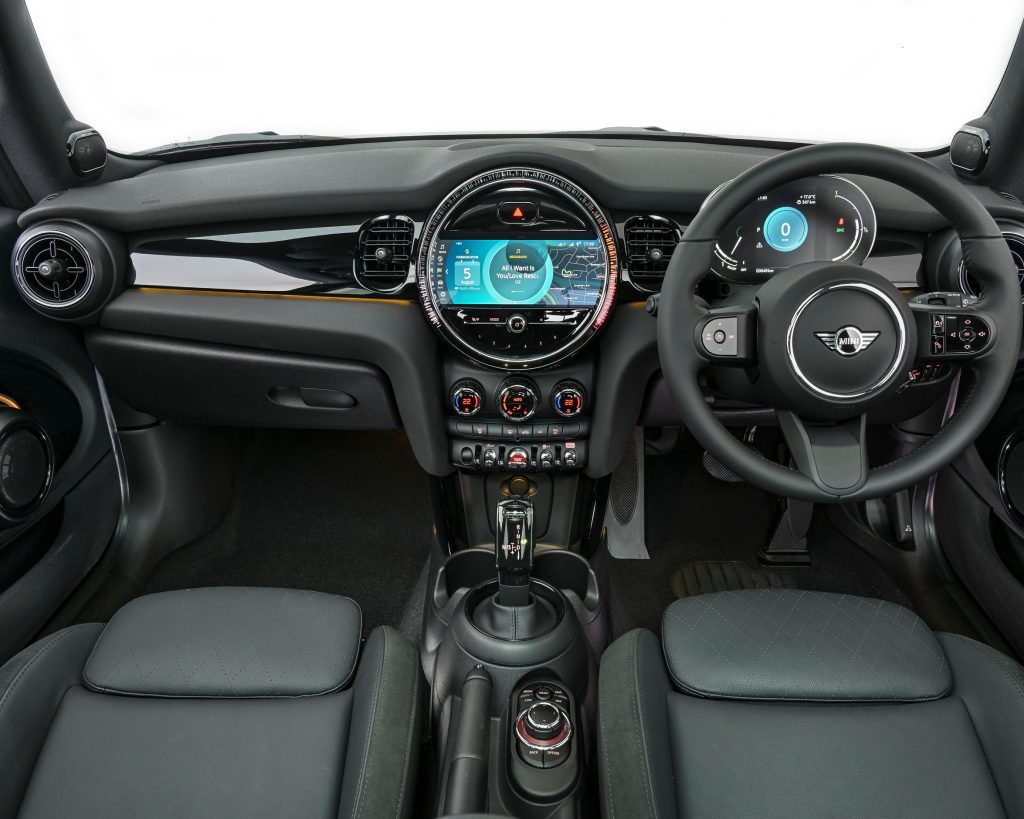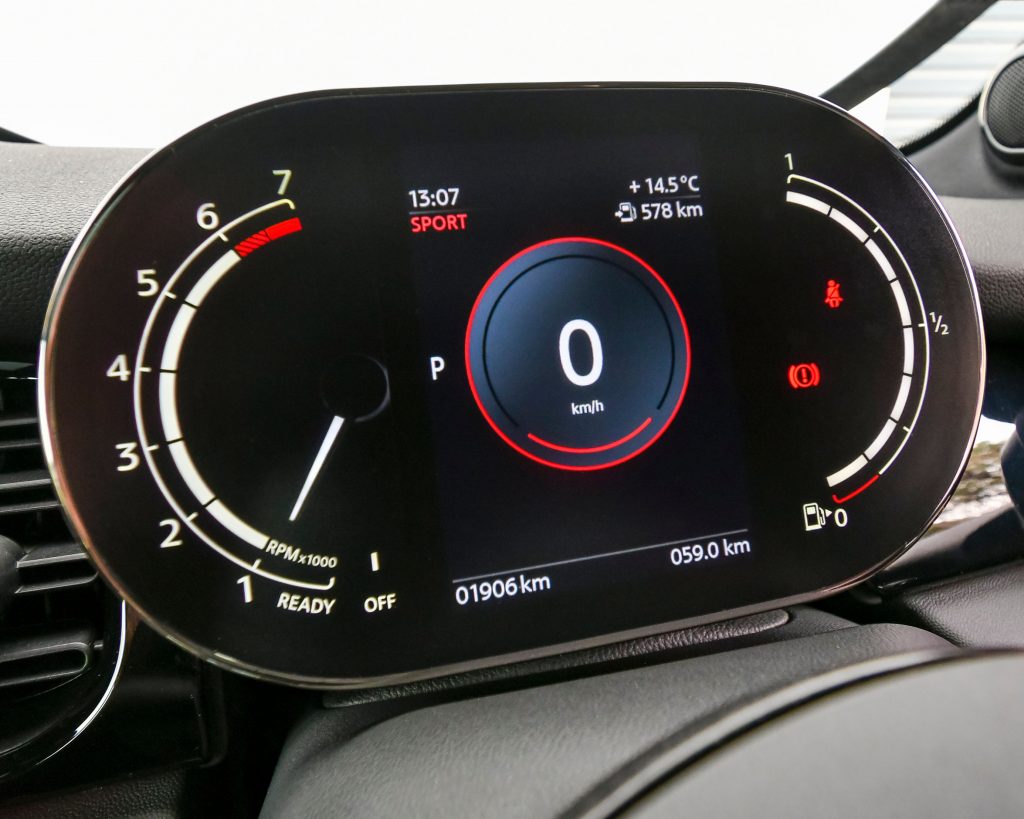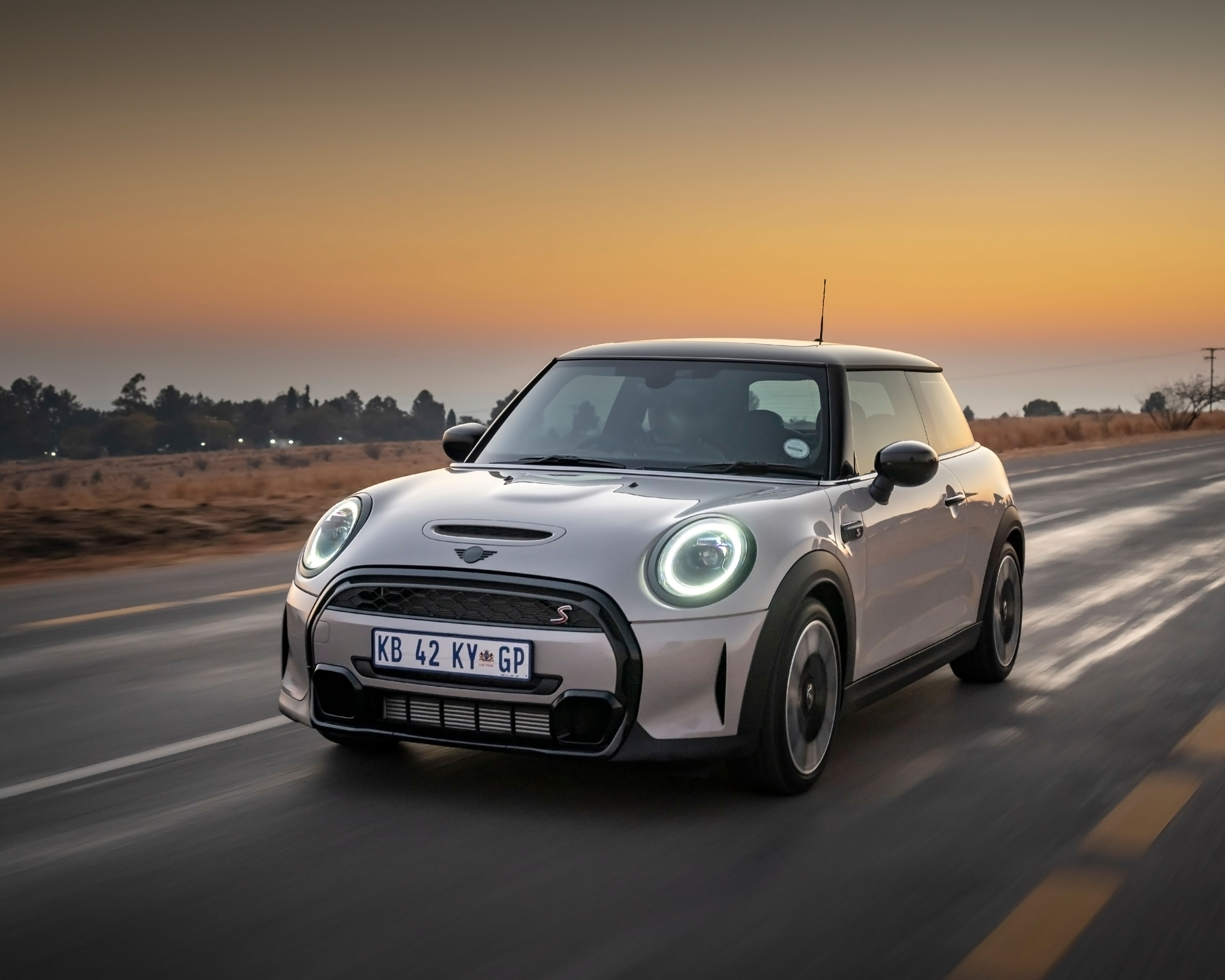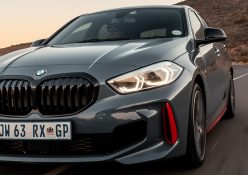Now updated with more tech and an imposing new front-end design, the latest MINI has arrived in Mzansi for those who want to feel young again.
We drove the recently updated MINI Cooper model in five-door guise at its launch in Joburg and the first thing we noticed was its new hexagonal grille and standard LED headlights. These are the major headlines at the front. Turning to the rear, LED tail lights sport the Union Jack flag design as standard, while the wheel arches feature black cladding. The newer exterior design elements are rounded off by a body-coloured strip on the lower section of the bumper. There are three new wheel options, available in 17- and 18-inches as well as a trio of new hues: Zesty Yellow, Rooftop Grey Metallic and Island Blue Metallic. From the driver’s seat, the noticeable differences include newer surfaces and air outlets, a redesigned steering wheel and the standard five-inch instrument display. All models now receive the central 8.8-inch instrument cluster with piano black inserts as standard. The latest version of MINI’s sports seats in a new light chequered colour, as well as an Ambient Light option with a laser-engraved LED ring, is now available.
Bearing the company codename F55, MINI has opted not to fiddle with the engine line-up, and even in Cooper guise the 1.5-litre turbocharged petrol motor with 100 kW and 220 Nm felt urgent enough to maintain pace with highway traffic between Joburg and Pretoria. Mated to a seven-speed dual-clutch automatic gearbox and boasting a claimed zero to 100 km/h sprint time of 8.1 seconds, the MINI Cooper’s sharp and direct steering feel to the front wheels is grin-inducing. The chassis feels great and offers a planted feel as well as lots of confidence when driving enthusiastically. There are two more powerful models placed above the MINI Cooper, however, its sharp handling, relatively small footprint and sprightly engine offer thrills at low speeds, something we’ve always enjoyed about a MINI. New to the updated range is a reworked chassis with adaptive dampers that do a good job of smoothing out the nasty surfaces of Gauteng roads.
We dialled through the trio of driving modes, namely Green, Normal and Sport, and each offers a tangible difference in output from behind the wheel. The eco-friendly mode labelled Green prods the dual clutch to change gears earlier in the rev range and offers an icon in the instrument cluster to show how many kilometres the driver has ‘added’ to the fuel range. Moving the drive mode selector to the sportiest setting evokes a lovely thrum from the three-cylinder engine and the car offers quicker responses via the steering wheel. What’s surprising, in a good way, is that one could easily drive in Sport mode permanently and still eke out a considerable amount of range from the 44-litre fuel tank. For the first time, adaptive cruise control and a Lane Departure Warning system are offered as we see another example of BMW’s features filtering their way into the MINI portfolio. The changes both inside and out offer potential buyers more options to personalise models from MINI. The tide is changing and with the MINI offering the country’s cheapest EV at R658 000, it’s also the beginning of the end for internal combustion-powered cars from the brand. 1.5-litre turbocharged petrol motor with 100 kW and 220 Nm felt urgent enough to maintain pace with highway traffic between Joburg and Pretoria. Mated to a seven-speed dual-clutch automatic gearbox and boasting a claimed zero to 100 km/h sprint time of 8.1 seconds, the MINI Cooper’s sharp and direct steering feel to the front wheels is grin-inducing.

The chassis feels great and offers a planted feel as well as lots of confidence when driving enthusiastically. There are two more powerful models placed above the MINI Cooper, however, its sharp handling, relatively small footprint and sprightly engine offer thrills at low speeds, something we’ve always enjoyed about a MINI. New to the updated range is a reworked chassis with adaptive dampers that do a good job of smoothing out the nasty surfaces of Gauteng roads. We dialled through the trio of driving modes, namely Green, Normal and Sport, and each offers a tangible difference in output from behind the wheel. The eco-friendly mode labelled Green prods the dual clutch to change gears earlier in the rev range and offers an icon in the instrument cluster to show how many kilometres the driver has ‘added’ to the fuel range. Moving the drive mode selector to the sportiest setting evokes a lovely thrum from the three-cylinder engine and the car offers quicker responses via the steering wheel.

What’s surprising, in a good way, is that one could easily drive in Sport mode permanently and still eke out a considerable amount of range from the 44-litre fuel tank. For the first time, adaptive cruise control and a Lane Departure Warning system are offered as we see another example of BMW’s features filtering their way into the MINI portfolio.The changes both inside and out offer potential buyers more options to personalise models from MINI. The tide is changing and with the MINI offering the country’s cheapest EV at R658 000, it’s also the beginning of the end for internal combustion-powered cars from the brand.
Words by Sean Parker
Photography: Courtesy Images







